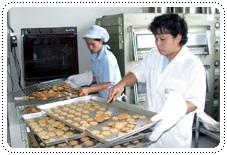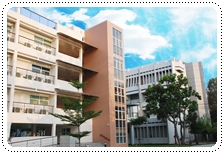Supporting Facilities
Laboratory, tools and technologies.
The Institute of Nutrition has sixteen laboratories equipped with modern instruments that allow it to perform nutrition research, nutrient analysis of biological samples, food quality and safety analyses, as well as efficacy studies of nutrient and bioactive ingredients in vitro, in cell line/tissue, in animals and in humans.
In addition to basic equipment for the analysis of physical, chemical, biochemical and microbiological qualities of food and biological samples, INMU’s laboratories are also equipped with unique and modern equipment, for example:
- Isotope ratio mass spectrometry (IRMS) for the analysis of stable isotope e.g. deuterium (2H), carbon-13 (13C), nitrogen-15 (15N), oxygen-18 (18O), which is the type of isotope found in nature. This analytical technique is the primary, internationally-recognized method for studies on body composition and energy expenditure in humans during rest and exercise.
- Body composition measurement (Bod-PodTM) analyzes body water and fat as body composition.
- High performance liquid chromatography (HPLC) is used for analyses of nutrients and bioactive ingredients, such as carotenoids, flavonoids, coenzyme Q10, water-soluble vitamins (vitamins C, B1 and B2), fat-soluble vitamins (vitamins A and E), benzoic acid, and sorbic acid.
Gas chromatography (GC) is used for analyses of nutrients and bioactive ingredients, such as fructans, inulin, oligosaccharide, phytosterol, cholesterol, and fatty acids. - Inductively coupled plasma optical emission spectrometry (ICP-OES) allows simultaneous analysis of various minerals, such as calcium, magnesium, iron, copper, and zinc.
- Atomic absorption spectrometry (AAS): flame and non-flame is used for the analysis of minerals and heavy metals, such as sodium, potassium, lead, and cadmium.
- Spectrofluorometry is used for analysis of antioxidant activity.
- Clean room for analysis of stable isotope in studies of mineral absorption in humans.
- Cell culture facility, including laminar flow, carbondioxide incubator, etc., for efficacy study in human cell/tissue.
Throughout its history, the Institute of Nutrition has emphasized bringing research to practice. The Institute, therefore, develops its facilities to support knowledge transfer from laboratory to community and society. These facilities include the following premises:
- A field station in Ubon Ratchatani province, Northeast Thailand;
- A prototype factory for research and food product development for nutrition;
- A prototype factory for research, training and drinking water production; and
- A clinical research unit.
Prototype factory for research and food product development
This prototype factory was established in 1991 and is located at the Institute of Nutrition in Salaya. It provides a venue for graduate training and research in food product development from laboratory to industrial levels. The prototype factory has space for production and laboratory work. It is also equipped with a sensory quality test room, a kitchen, cold storage, a work room, and an area for the small-scale marketing of foods and health food products.

Clinical research unit
The Clinical Research Unit (CRU), operating under INMU’s Human Nutrition Division, conducts ethically sound clinical research aimed at improving the health of the Thai population. The main research objective is to gain insights into the metabolisation of nutrients and non-nutrients in the human body. The relationship between diet and chronic degenerative diseases is also explored. In addition, the CRU provides services such as the assessment of nutritional status, body composition, basal metabolic rate, energy costs at rest and during exercise, and dietary counseling.


